Leonardo: Leobit’s AI-Powered HR Assistant
Custom development of an enterprise-grade AI-powered workplace assistant
ABOUT the project
- Client:
- Leobit's Internal Project
- Location:
-

UK
|London
- Company Size:
- 100+ Employees
- Industry:
-
Information Technology
- Solution:
- Custom Software
Leonardo is an enterprise-grade AI-powered workplace assistant implemented as a Slack bot. The solution works as an HR assistant for Leobit employees. By securely accessing the company’s database and employee information, it can respond to questions on coworkers, vacations, and company policies, as well as provide dynamic corporate documentation.
Leonardo is a friendly AI companion that is ready to answer any company questions. The solution includes several innovative architectural decisions designed to optimize its performance, manageability, and response precision. It empowers our employees, boosts their productivity, and helps us streamline communication and knowledge sharing within the company.

Customer
It was Leobit’s internal project aimed at empowering our employees and enhancing our HR team’s productivity.
Business Challenge
Leobit’s employees often need to quickly access company information, colleague details, and dynamic business data. Sometimes, this process takes time, as our specialists spend time and effort searching through various systems and documents, as well as messaging our HR managers.
Project
in detail
The implementation of Leonardo can be roughly divided into the planning stage and three stages of active development.
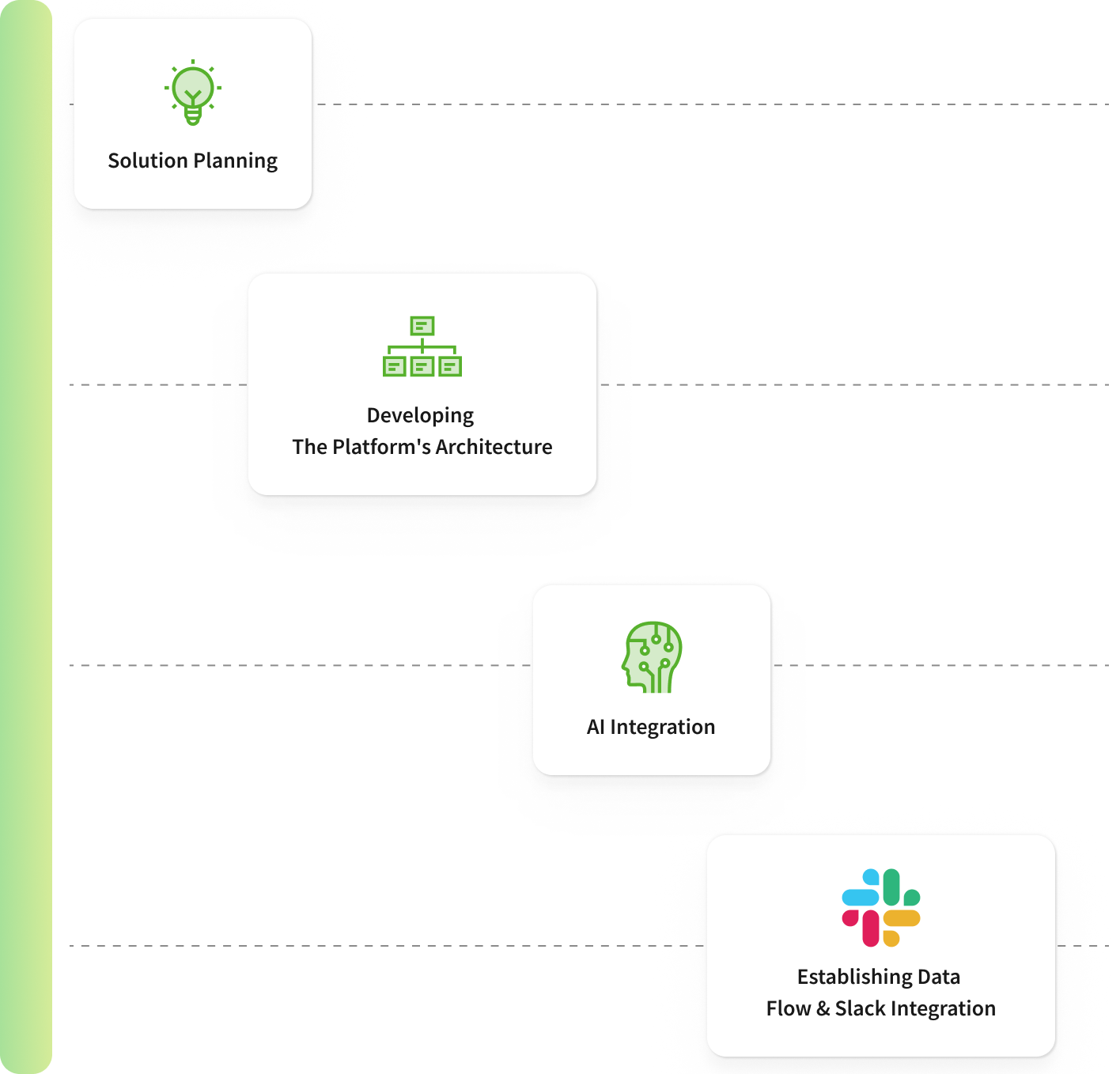

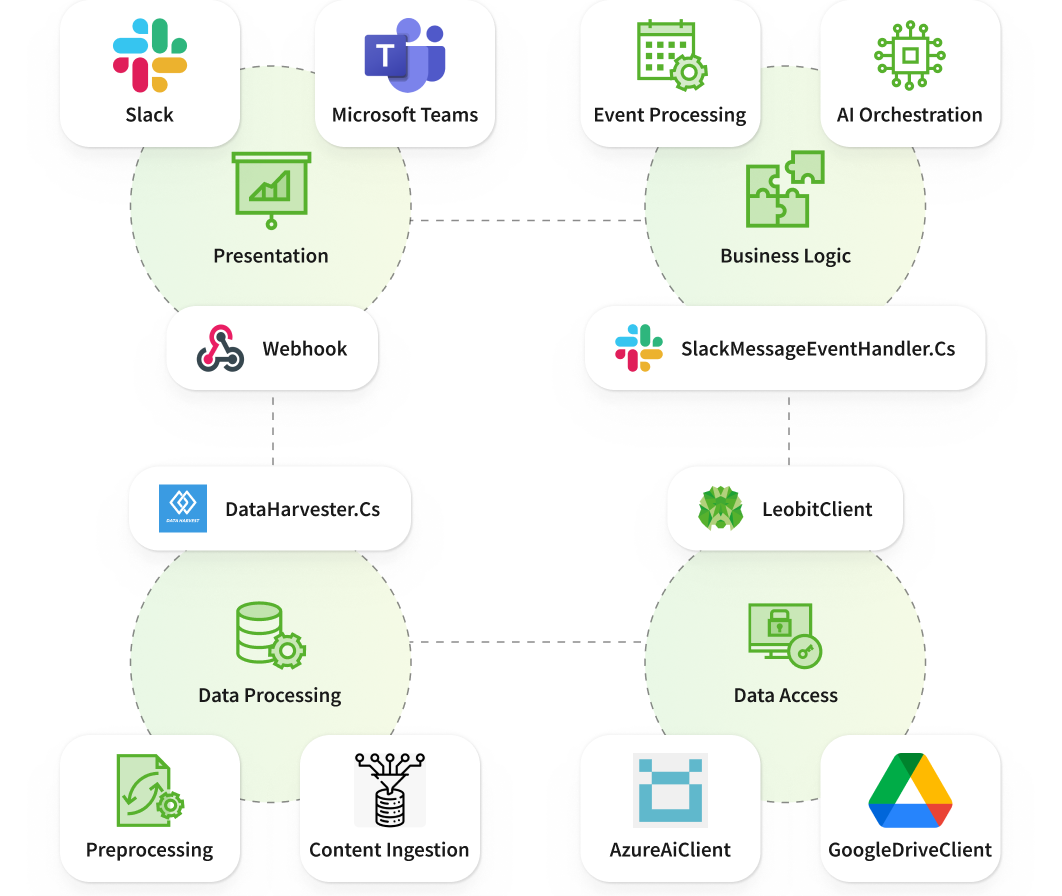
4 Layers Responsible for Different Functions
- Integration layer that is responsible for communication with external platforms like Slack and Microsoft Teams. It involves a multi platform webhook receiver.
- Business logic layer manages event processing, orchestrates AI workflows, and coordinates interactions between components.
- Data processing layer responsible for ingesting, transforming, and preparing content from various sources in an automated manner.
- Data access layer based on custom written and publicly available SDKs for ERP, Azure, Google Drive. This tier is responsible for retrieving data from Leobit’s curated data sources.
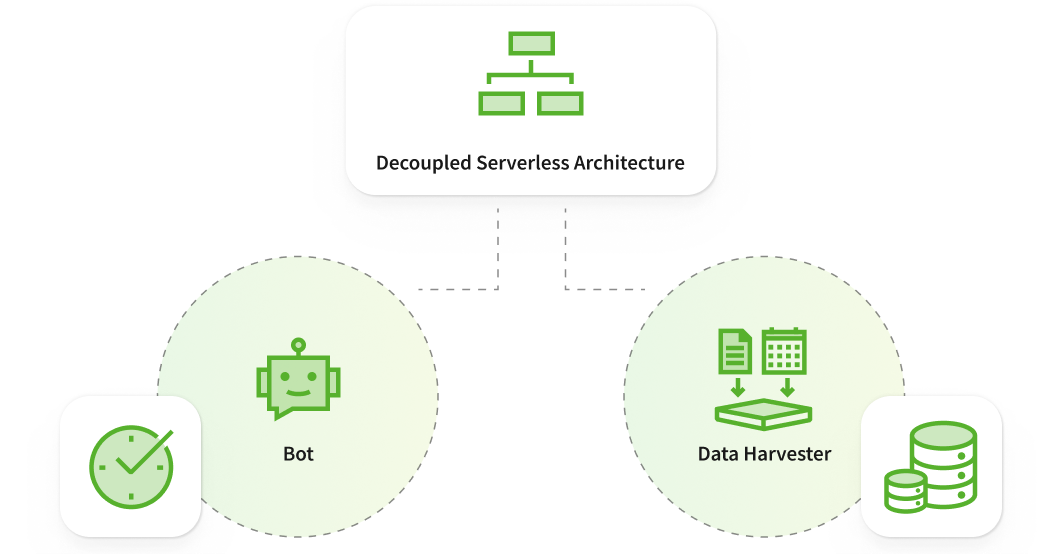
Decoupled Serverless Architecture
While implementing the platform, we were focused on isolating concerns and ensuring independent platform scaling. As a result, we applied a dual serverless architecture that consists of a bot and a data harvester. Our main bot handles real-time interactions. Meanwhile, the data harvester runs on schedule to collect information from the company database.
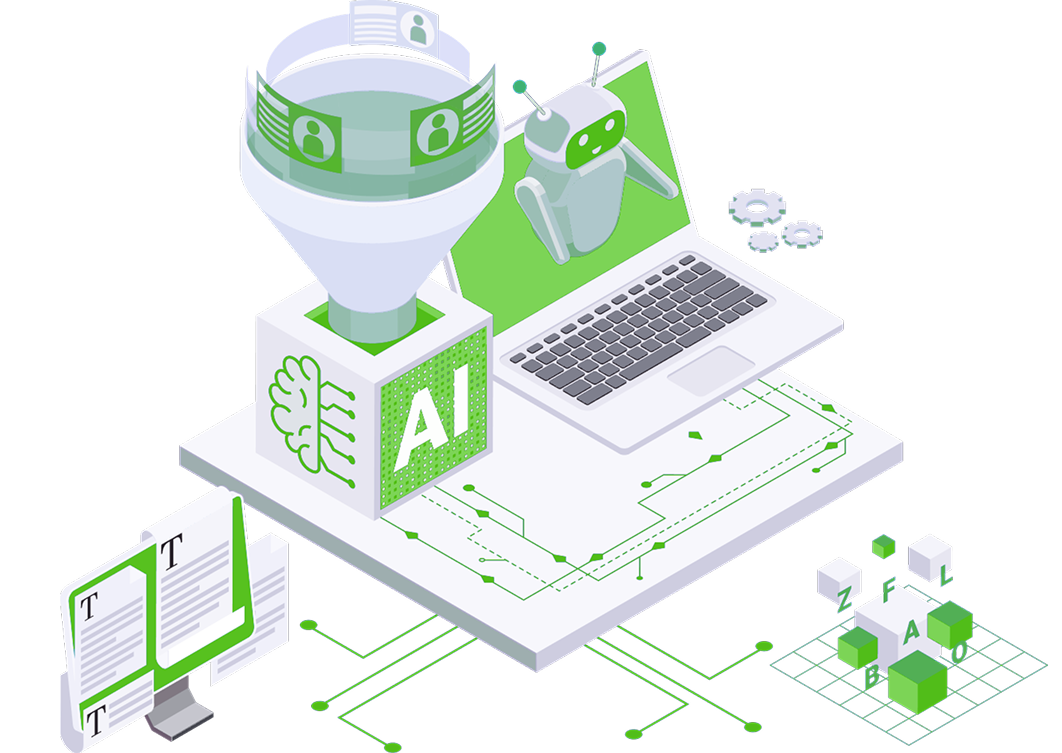
Intelligent Data Processing Pipeline
We applied a custom preprocessing script for efficient AI indexing of data from company databases. The point is that human-readable content isn’t optimized for LLM consumption. Our custom script extracts information from embedded text, reformats it for structured representation, removes redundancy, and optimizes tokens, ultimately making this information fit for AI consumption. The same pipeline is responsible for standardizing the format of AI responses, making them human-optimized.
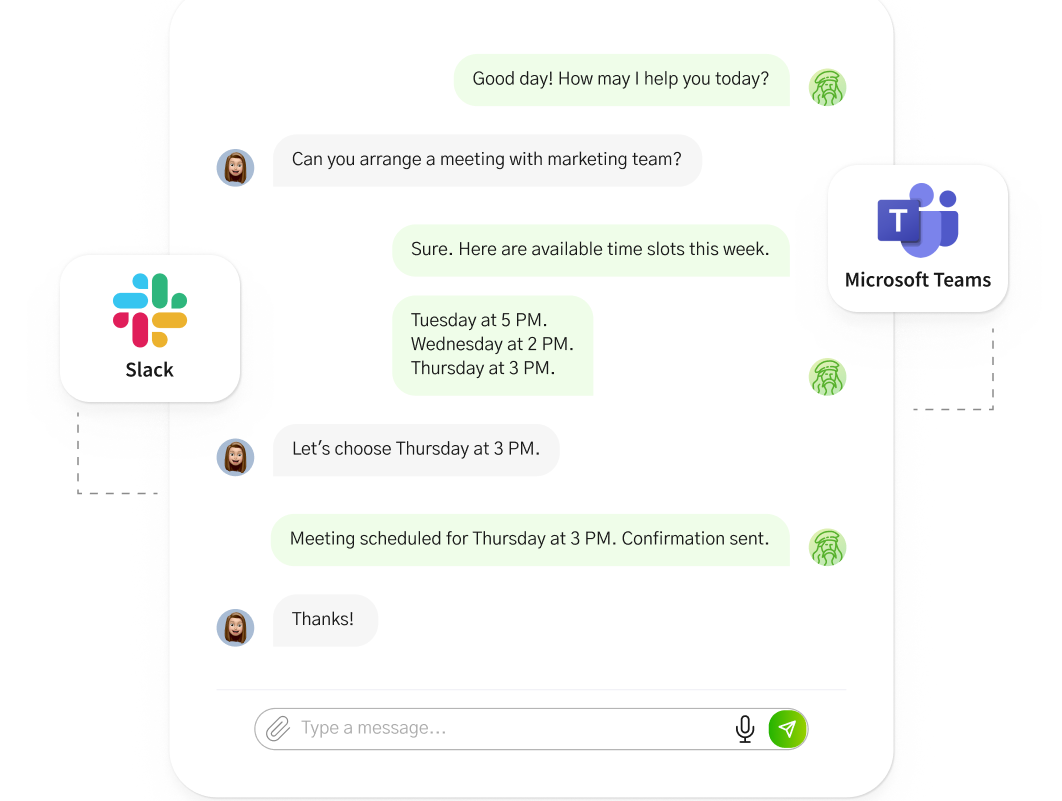
Extensible Support for Messaging Platforms
The solution provides an abstract messaging interface that efficiently integrates with Slack. It applies a modular webhook that connects to platform-specific adapters. To ensure responsiveness and prevent timeouts imposed by third-party platforms (such as Slack webhooks), we designed the system to deliver an immediate placeholder response. The actual AI processing and data retrieval are offloaded to background tasks, allowing the platform to later update or edit the original message with the final results.
Leonardo can be accessed directly through Slack or tagged in any conversation to assist with text summarization, fact-checking, or providing relevant information within the ongoing chat. In the future, we plan to extend our webhook contract to connect the platform with Microsoft Teams and other platforms.
Technology Solutions
- A hybrid approach to data processing, which combines cached indexed content and real-time API calls to ensure dynamic content freshness while maintaining fast performance.
- Decoupled serverless architecture that consists of a bot and a data harvester; designed to ensure an efficient separation of concerns.
- A well-organized 4-layer architecture notable for its excellent manageability.
- A modular webhook that efficiently integrates the solution with Slack, allowing users to access Leonardo directly through Slack or tag it in any conversation.
- Response time below 3 seconds and a 4-messages conversation history with the expansion capability.
- Efficient data pipeline that automatically optimizes user requests for LLM processing and provides human-optimized responses.
- Intelligent caching strategy for enhanced system performance.
Value Delivered
- An intelligent AI-powered solution that efficiently deals with non-sensitive information about employees, like name, surname, position, manager, available vacation and more.
- A solution that successfully bridges conversational AI with enterprise data systems, featuring real-time data retrieval, automated content processing, and intelligent document indexing.
- Seamless integration with Slack and possibilities for further integration with other enterprise collaboration tools, such as Microsoft Teams.
